Thanks, I was very scared as I did not want to make a new neck. I finally just pulled out the hot iron and was then was quickly committed to fixing it up.Kevin in California wrote:Wow John, nice save and it looks like nothing happened.
Falcate Braced Classical Guitar - Finished!
-
John Parchem
- Posts: 2746
- Joined: Fri Dec 23, 2011 8:33 pm
- Location: Seattle
- Contact:
Re: Falcate Braced Classical Guitar - Complete ready for fin
-
Kevin in California
- Posts: 2798
- Joined: Mon Dec 19, 2011 4:19 pm
Re: Falcate Braced Classical Guitar - Complete ready for fin
By the way, I really like the look of the squared off slots. Nice touch.
-
John Parchem
- Posts: 2746
- Joined: Fri Dec 23, 2011 8:33 pm
- Location: Seattle
- Contact:
Re: Falcate Braced Classical Guitar - Complete ready for fin
Thanks Kevin, it is the first time I tried the square slot and ramp.
The jig I used to machine the compensated nut is not the jig that Trevor Gore uses to machine his compensated nuts. He has a much more elegant jig that allows him to adjust the compensation he needs for each string attach a sized nut blank to the jig and machine the nut using a drill press as a pin router. I could not get together everything I needed to make the jig so until I do I found another method using my new made classical bridge jig that I based off of one in the book It seems to work.
When I made the classical bridge jig I used the rails to make the well so the front edge is parallel to the rails. My bishop Cochran router base adjustment is .8 mm per turn. So 1/2 = .4 mm, 1/4 = .2 and 1/8 = .1. These are all positions that are easy to see. I could probably get close to .05.
I made a nut holder that was the same thickness as the fret board so that I could easily set the depth. I zeroed on the front of the nut and proceeded to cut each slot. I had one that string location that I needed to ease the router into the rails. But it came out ok and pretty accurate. I have them all a tad more compensated so that I can clean the leading edge.
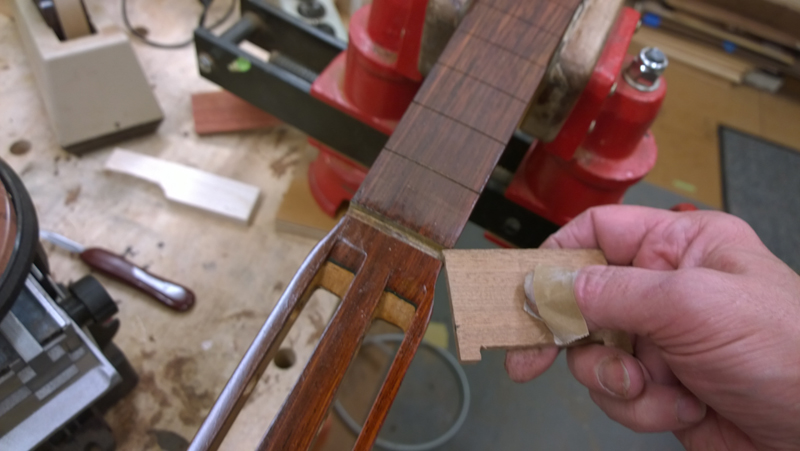
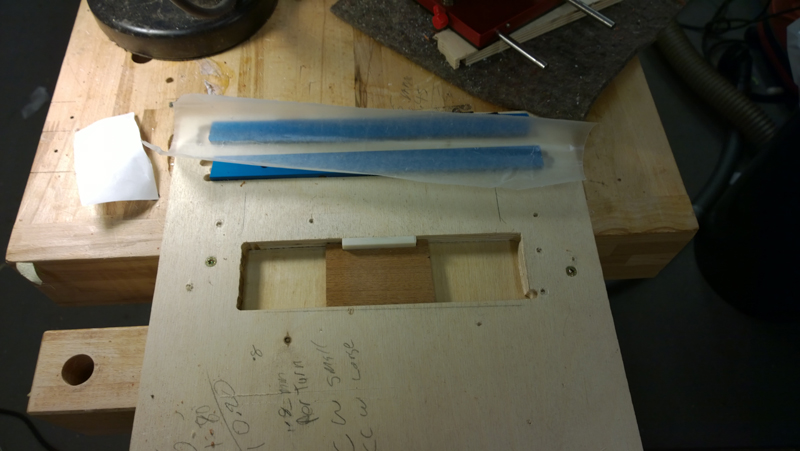
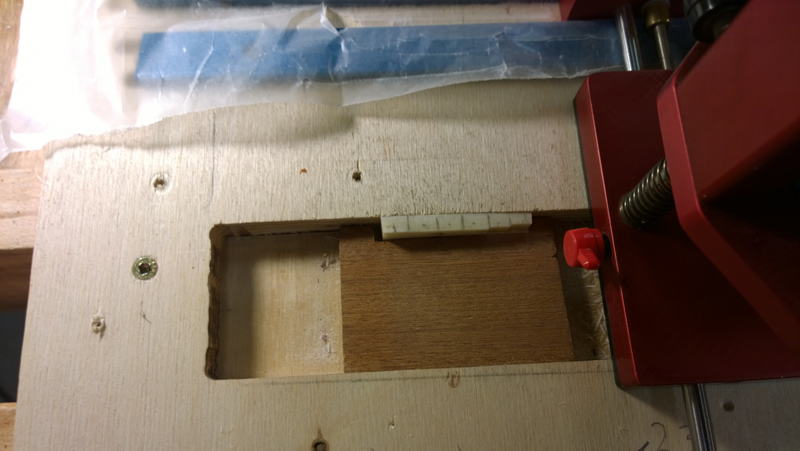
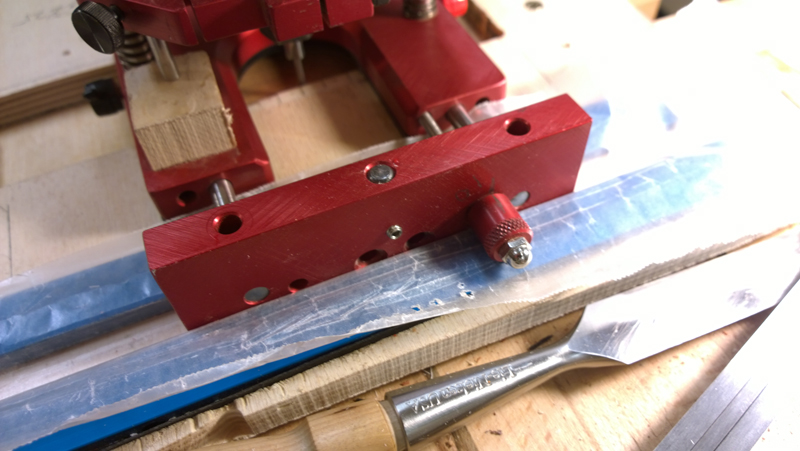
It still needs shaping but the front ledges are very close to where they should be. I will do a bit of clean up and make them just tight.
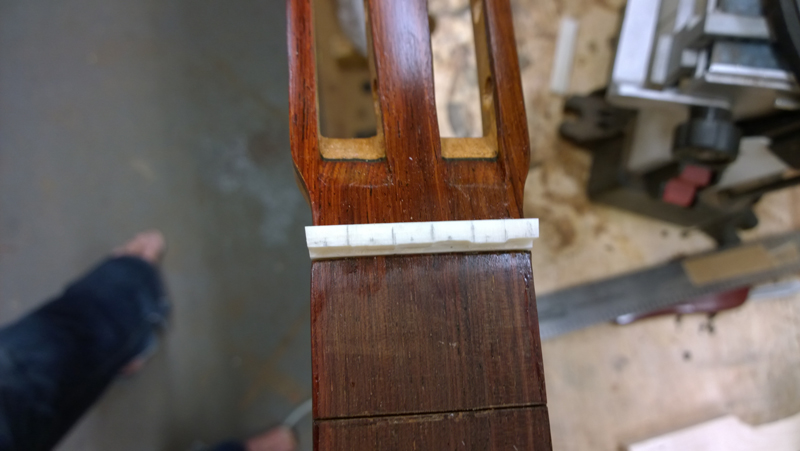
I glued the bone into the bridge so it was time to glue the bridge down.
I level sanded and polished the guitar so that I could do that without the bridge in the way. I used my ROS at 600 grit light sanding and then micro mesh disks up to 8000, followed by buffing.
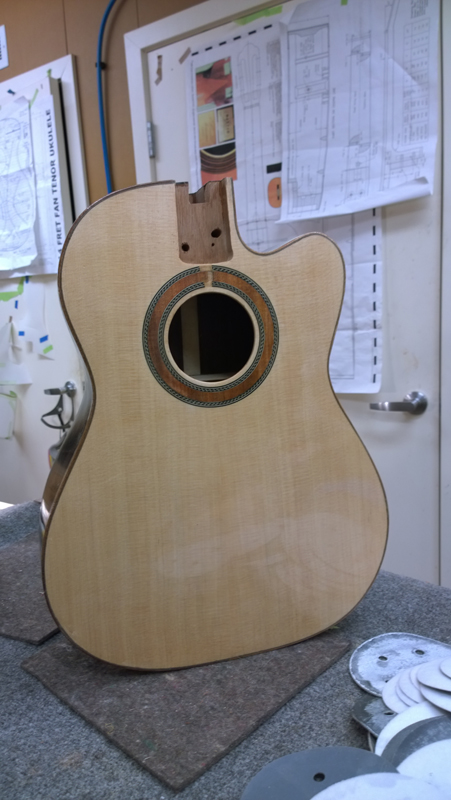
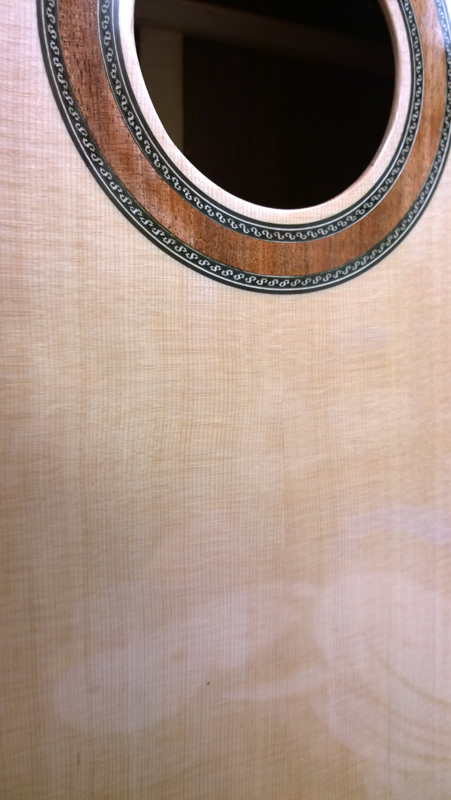
Because I am doing all of this fancy compensation, I check and double checked the bridge placement. I used the 12 fret as my home to measure from as the nut edge of the fret board was cut 2 mm shorter. Because I have a compensated nut I need only .8 mm of compensation. I do have a wide saddle for a classical so I can compensated up to 3 mm.
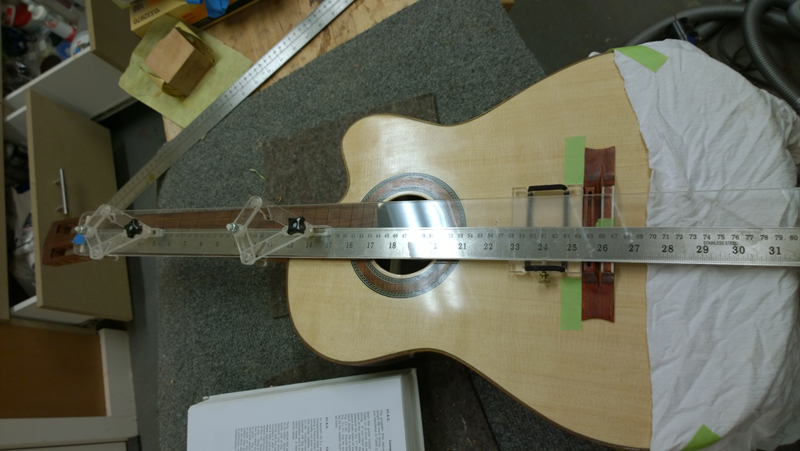
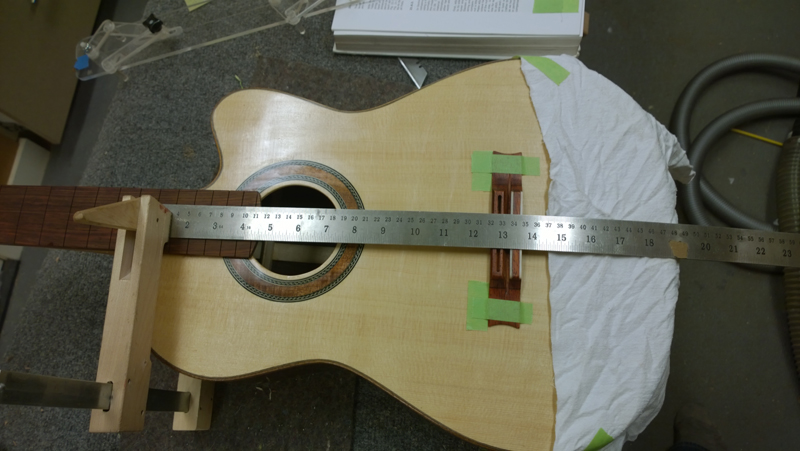
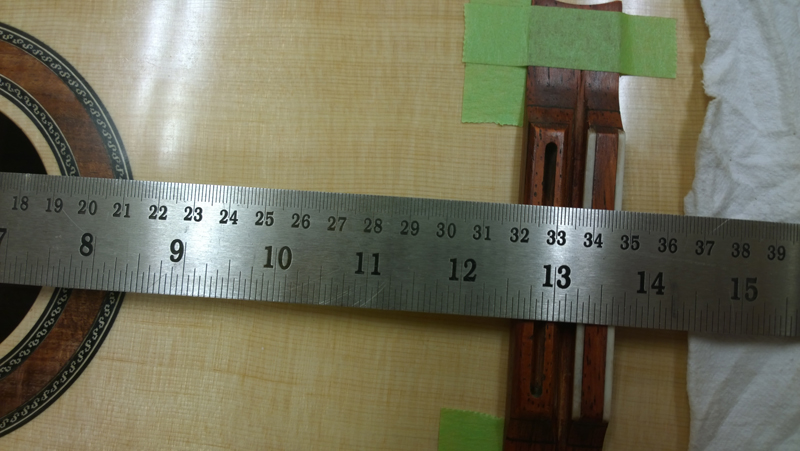
I checked the plans to find a good location for the locating pins and drilled them
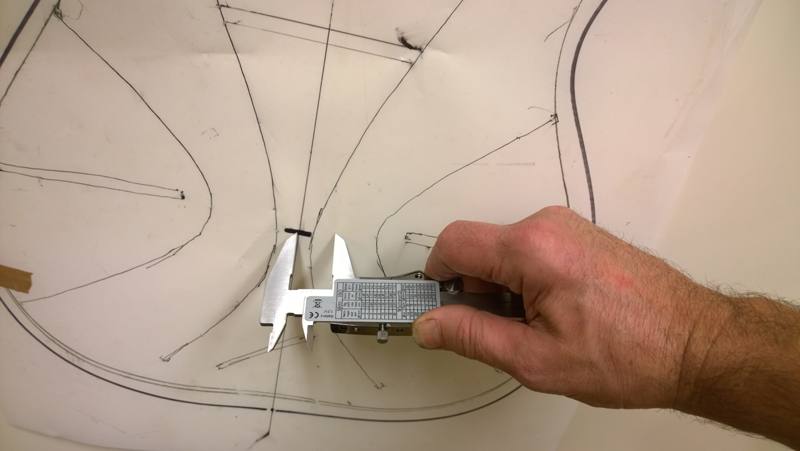

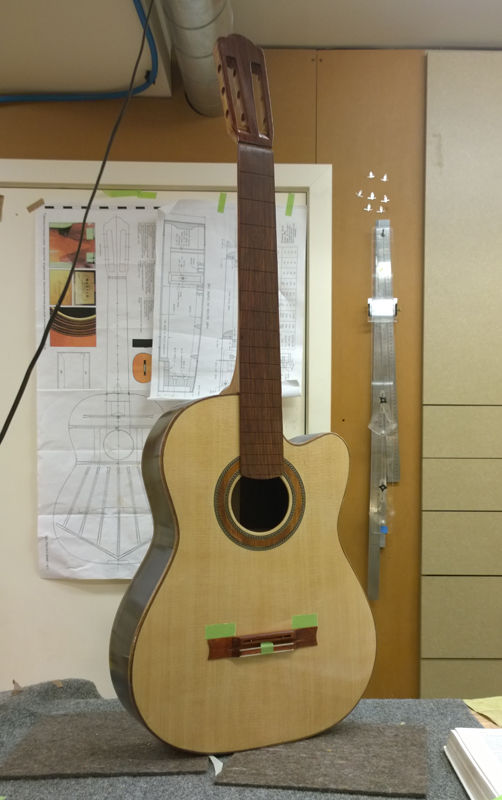
I use a scalpel with a brand new blade to outline the bridge. It is so sharp that a light cut cleanly cuts through the finish.
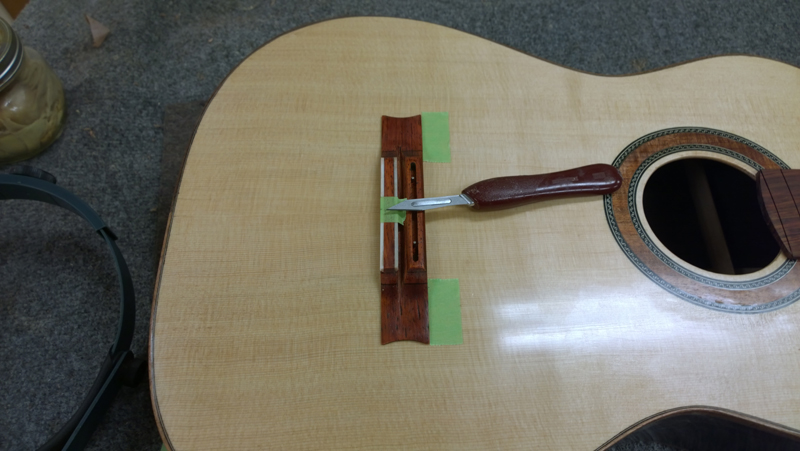
I use a heavy duty utility blade to scrape the finish off the wood. I tape the back end so I only need to keep track of one end.
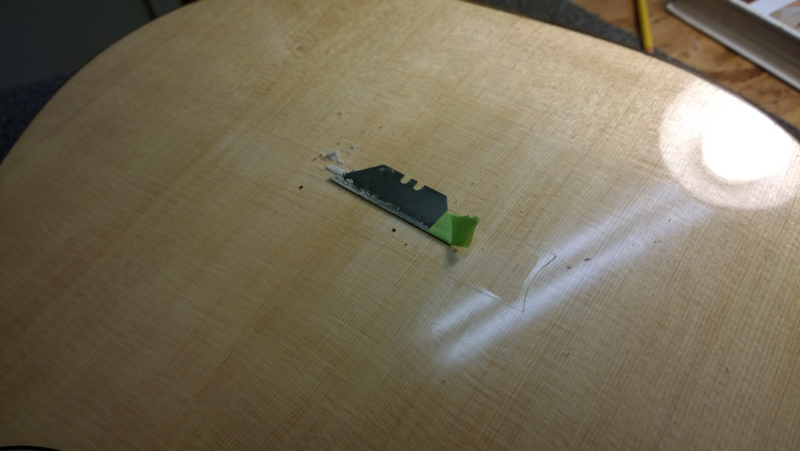
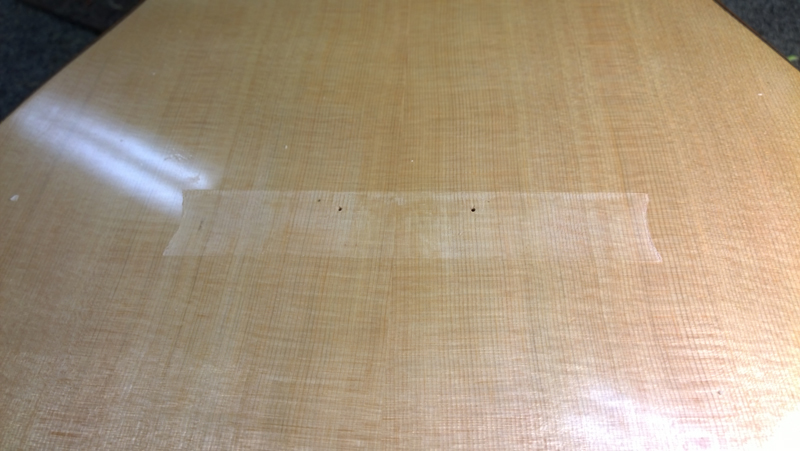
To get ready for the vacuum clamp I taped some appropriate sized blocks on the wings, I just find it does a better job of clamping the wings, I leave the pins end but I duck taped the slot to get rid of leaks. I applied the vacuum clamp for about 8 minutes, cleaned up the squeeze out and am keeping it clamped for an hour or two.
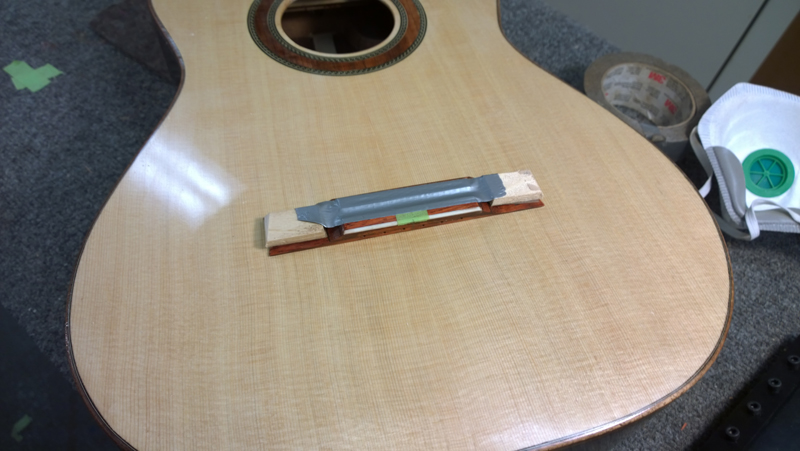
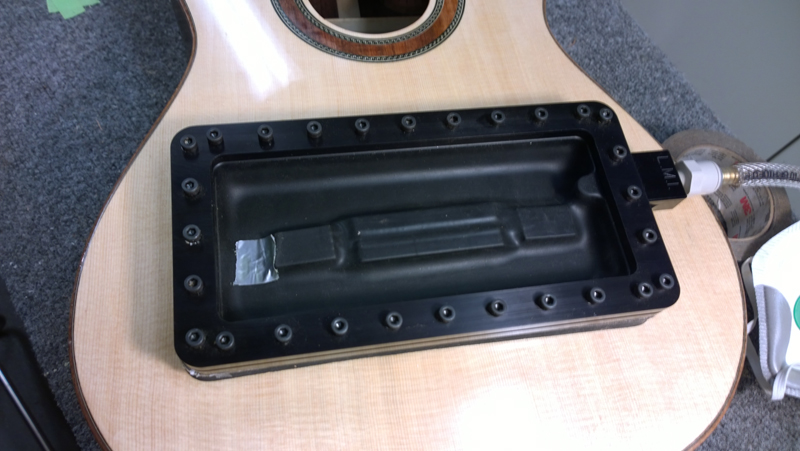
The jig I used to machine the compensated nut is not the jig that Trevor Gore uses to machine his compensated nuts. He has a much more elegant jig that allows him to adjust the compensation he needs for each string attach a sized nut blank to the jig and machine the nut using a drill press as a pin router. I could not get together everything I needed to make the jig so until I do I found another method using my new made classical bridge jig that I based off of one in the book It seems to work.
When I made the classical bridge jig I used the rails to make the well so the front edge is parallel to the rails. My bishop Cochran router base adjustment is .8 mm per turn. So 1/2 = .4 mm, 1/4 = .2 and 1/8 = .1. These are all positions that are easy to see. I could probably get close to .05.
I made a nut holder that was the same thickness as the fret board so that I could easily set the depth. I zeroed on the front of the nut and proceeded to cut each slot. I had one that string location that I needed to ease the router into the rails. But it came out ok and pretty accurate. I have them all a tad more compensated so that I can clean the leading edge.




It still needs shaping but the front ledges are very close to where they should be. I will do a bit of clean up and make them just tight.

I glued the bone into the bridge so it was time to glue the bridge down.
I level sanded and polished the guitar so that I could do that without the bridge in the way. I used my ROS at 600 grit light sanding and then micro mesh disks up to 8000, followed by buffing.


Because I am doing all of this fancy compensation, I check and double checked the bridge placement. I used the 12 fret as my home to measure from as the nut edge of the fret board was cut 2 mm shorter. Because I have a compensated nut I need only .8 mm of compensation. I do have a wide saddle for a classical so I can compensated up to 3 mm.



I checked the plans to find a good location for the locating pins and drilled them



I use a scalpel with a brand new blade to outline the bridge. It is so sharp that a light cut cleanly cuts through the finish.

I use a heavy duty utility blade to scrape the finish off the wood. I tape the back end so I only need to keep track of one end.


To get ready for the vacuum clamp I taped some appropriate sized blocks on the wings, I just find it does a better job of clamping the wings, I leave the pins end but I duck taped the slot to get rid of leaks. I applied the vacuum clamp for about 8 minutes, cleaned up the squeeze out and am keeping it clamped for an hour or two.


-
John Parchem
- Posts: 2746
- Joined: Fri Dec 23, 2011 8:33 pm
- Location: Seattle
- Contact:
Re: Falcate Braced Classical Guitar - Complete ready for fin
and the tap test ...
With the bridge glued on I did a tap test of this falcate classical. I think it came out with working values. Depending what happens with the strings, I can add mass to the sides if I want to lower the top off F# (I know it is right on F# as I have my falcate SS guitar on the wall with the g string tuned down to F# and it started singing. I left the bottom brace pretty tall so I can get the back on target as well. I will wait for the strings first. From a closed box tap test the top came down two hertz with the bridge and air up about 2 Hz. My fret board covers a bit of the sound hole so that might be what changed the air resonance.
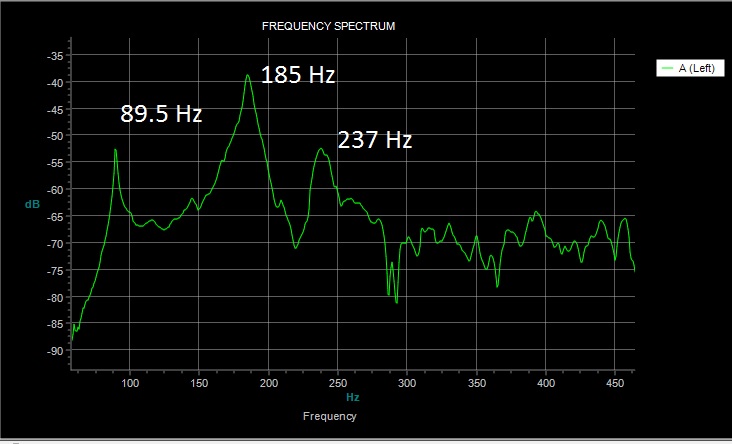

With the bridge glued on I did a tap test of this falcate classical. I think it came out with working values. Depending what happens with the strings, I can add mass to the sides if I want to lower the top off F# (I know it is right on F# as I have my falcate SS guitar on the wall with the g string tuned down to F# and it started singing. I left the bottom brace pretty tall so I can get the back on target as well. I will wait for the strings first. From a closed box tap test the top came down two hertz with the bridge and air up about 2 Hz. My fret board covers a bit of the sound hole so that might be what changed the air resonance.


-
John Parchem
- Posts: 2746
- Joined: Fri Dec 23, 2011 8:33 pm
- Location: Seattle
- Contact:
Re: Falcate Braced Classical Guitar - Finished!
I completed my first falcate classical. All and all the project came out OK and the guitar sounds good, but I did miss my target frequency on the top. As seen in the figure below I was low around 178 Hz instead of 190 Hz for the top. This lower frequency puts the top and the Air resonance an octave apart 88.6 Hz. I am not really hearing any horrible weakness around F but I am also not hearing what the guitar could have sounded like. I did put the back about 4 semitones away at 224 Hz. Ultimately I should have had the falcate braces taller. Possible the 7 mm that I used for my SS.johnparchem wrote: ... My target top frequency of 190 is a bit higher than the 180 target for the SS I made, but taking into account the difference in the effect of a steel string bridge vs a classical bridge I will for this exercise ignore this difference. ...
As part of a postmortem on the project I looked back at my design assumptions. I noted that my falcate SS top was 172 Hz not the 180 I used in the assumptions for my relative analysts. If I was a bit more careful early on and knowing that I wanted to push the target top resonance 20 Hz higher than my SS I may have left the braces taller.
Over all I am still happy with what I have and I have good data for my next attempt and a good guitar.
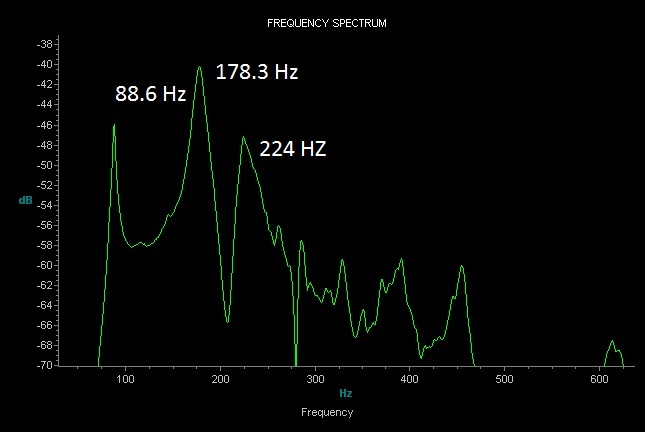
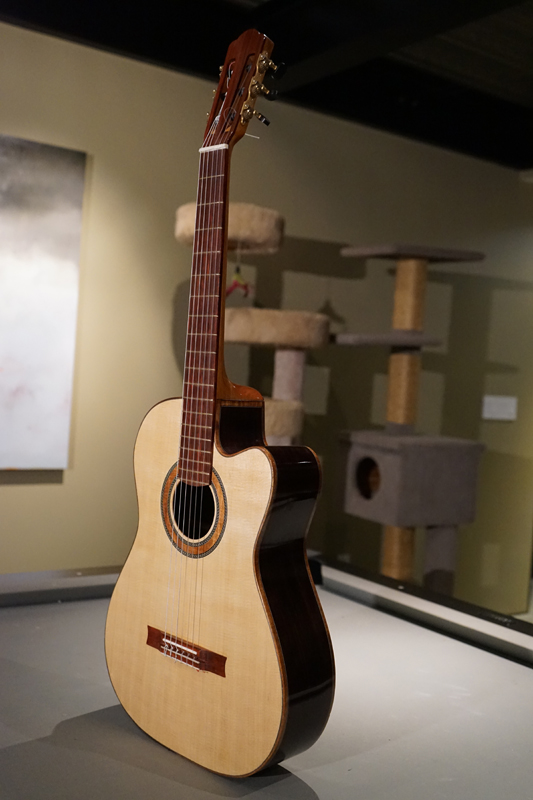
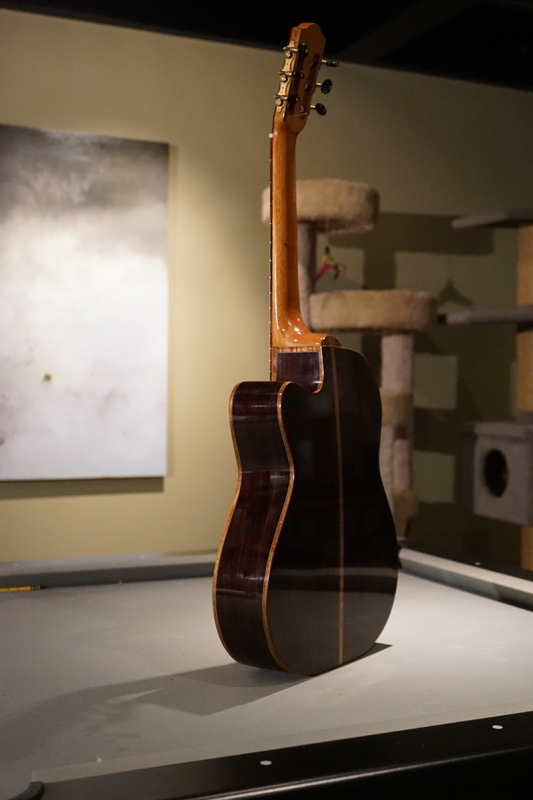
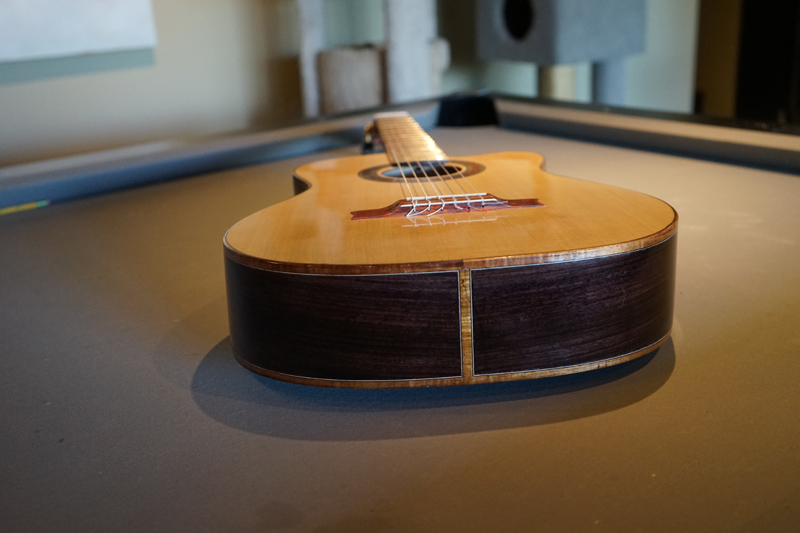
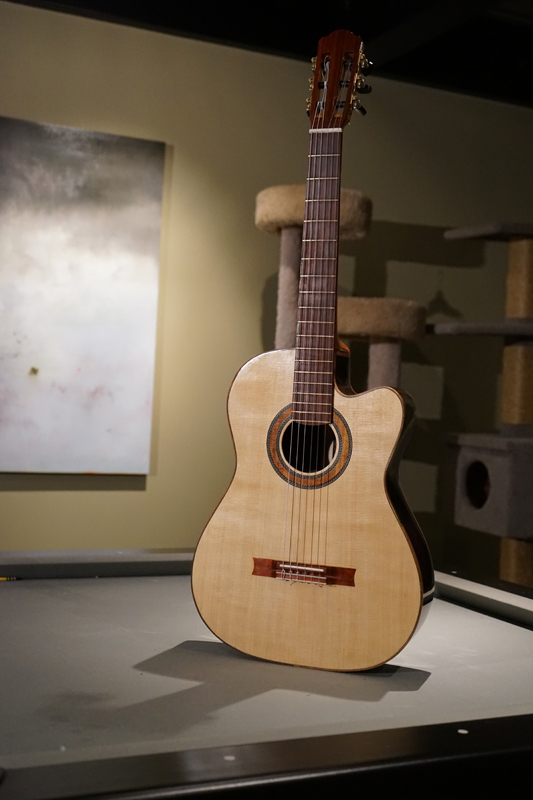
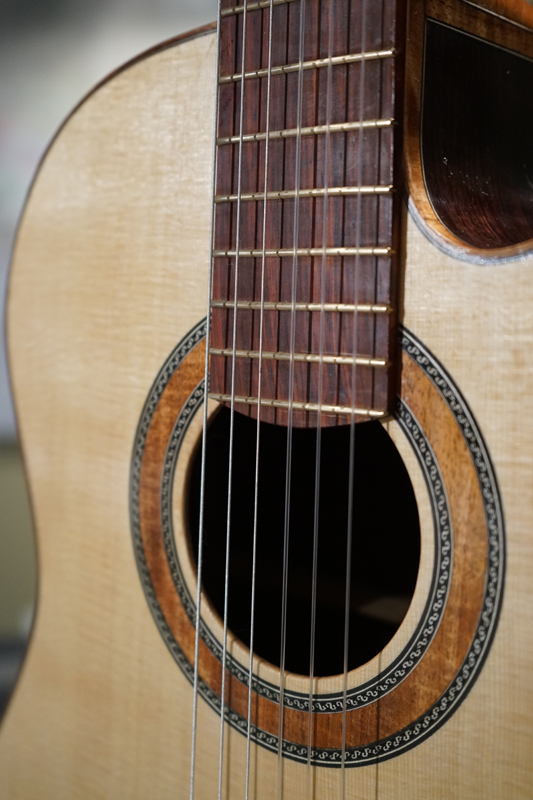
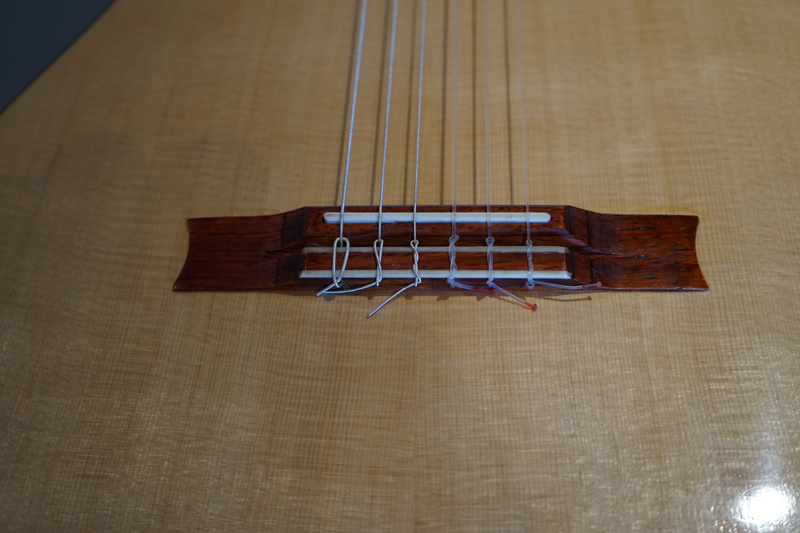
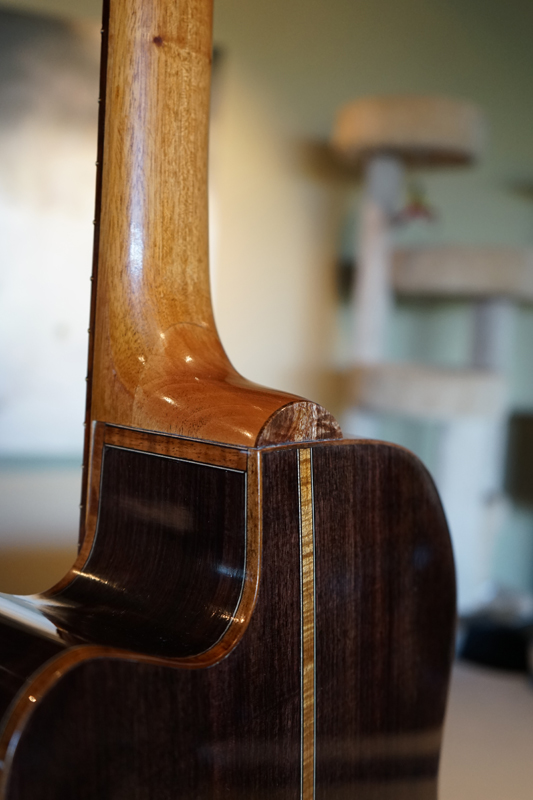

Last edited by John Parchem on Sun Mar 22, 2015 10:15 pm, edited 1 time in total.
-
OnlineHerman
- Posts: 1674
- Joined: Sun Dec 30, 2012 1:20 pm
- Location: Arnhem area, the Netherlands
- Contact:
Re: Falcate Braced Classical Guitar - Finished!
John, first: Again you made a great looking guitar! Beautiful combinations of woods.
Second: Numbers are sometimes just numbers. Maybe, in a while, this guitar will develop nice sounds. Don't be to hard on yourself. To me you make fine instruments.
Herman
Second: Numbers are sometimes just numbers. Maybe, in a while, this guitar will develop nice sounds. Don't be to hard on yourself. To me you make fine instruments.
Herman
-
John Parchem
- Posts: 2746
- Joined: Fri Dec 23, 2011 8:33 pm
- Location: Seattle
- Contact:
Re: Falcate Braced Classical Guitar - Finished!
Thanks Herman,
I did not mean to sound so down on myself. It is a good sounding guitar, the braces are structurally strong enough and I am getting a good response. I just wanted to be honest about my design decisions and how I did hitting my targets. The guitar has good volume a rich voice and pretty good trebles. Quite honestly if I was not looking at numbers I would be very pleased with the guitar it is now by far my best sounding classical, and it has only been strung a few days. Each day it has been sounding better as I play it and let the tone rite buzz it while not playing it.
I did not mean to sound so down on myself. It is a good sounding guitar, the braces are structurally strong enough and I am getting a good response. I just wanted to be honest about my design decisions and how I did hitting my targets. The guitar has good volume a rich voice and pretty good trebles. Quite honestly if I was not looking at numbers I would be very pleased with the guitar it is now by far my best sounding classical, and it has only been strung a few days. Each day it has been sounding better as I play it and let the tone rite buzz it while not playing it.
